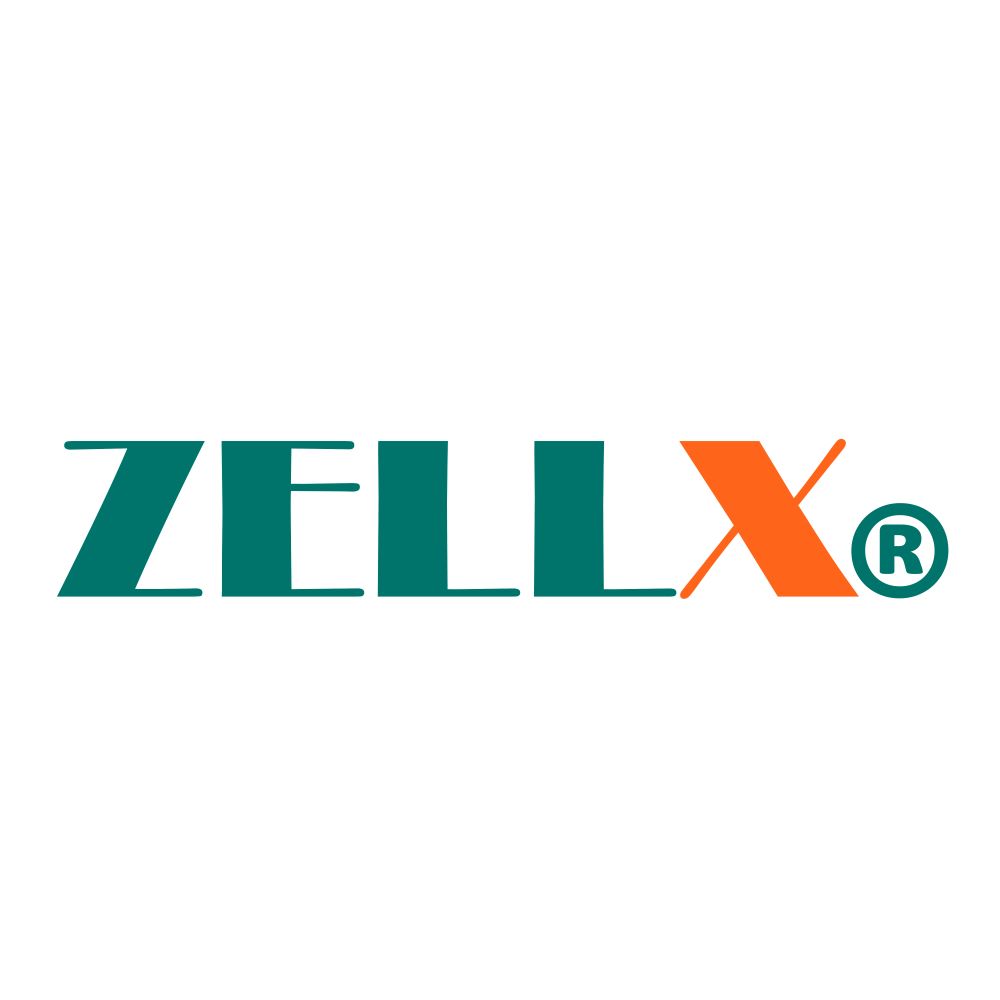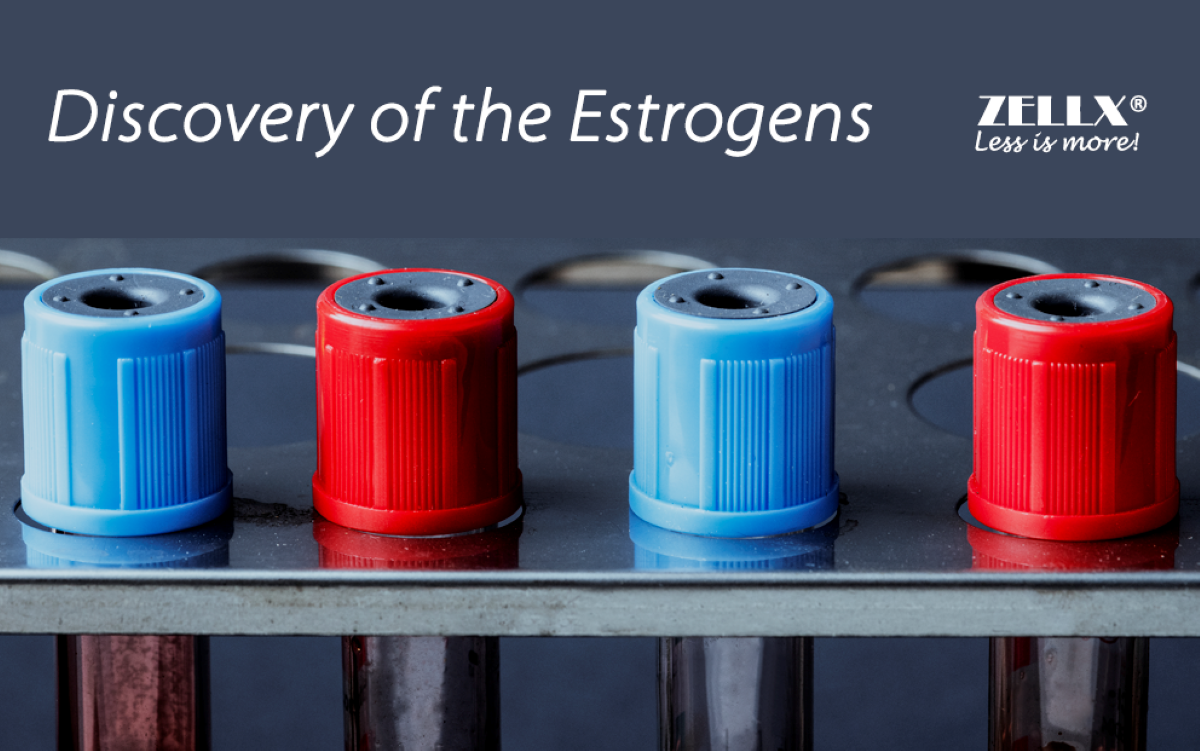By ZellBio GmbH
ZELLX® Estrogen assay kits
ZELLX® has developed ELISA kits for measuring the principal hormones classified as Estrogens: the main regulators of female sexual characteristics and responses as well as being involved in many functions in the human body, such as bone health, and cognitive function.
Estrogens are the key players in menstruation and in secondary sex characteristics, including breast development, pubic hair growth, etc.
Although estrogens are primarily made from cholesterol in female ovaries, they are also produced in trans-women, children, and post-menopausal women in other organs such as fat tissues, bones, skin, liver, adrenal gland and testis.
Types of estrogens
Estrogens are classified into four different hormones with distinct functions:
- Estrone: Also known as E1 or osterone, Estrone (C18H22O2) is a C-18 steroid hormone. It is one of the three naturally occurring Estrogens in women, along with Estradiol and Estriol. As a weaker estrogen, Estrone is involved in female sexual development and function, and is one of the major hormones found in women bodies post menopause.
- Estradiol: Also known as E2, Estradiol (C18H24O2), is the most prominent estrogen in the body, regulating menstrual reproductive cycles as well as the estrous cycle. It is a key regulator of growth, differentiation, and function in a wide array of tissues, including the male and female reproductive tracts, mammary gland, brain, skeletal and cardiovascular systems.
- Estriol: Also known as E3 or oestriol, Estriol (C18H24O3) is a C-18 steroid hormone involved in female sexual development and function. It is the third endogenous estrogen in women, and important for mother and baby, health Estriol constitutes 60-70% of the total Estrogens during pregnancy. It is mainly produced by placenta in pregnant women, increasing 300-500-fold during pregnancy.
- Estetrol: Also known as E4 or oestetrol, Estetrol (C18H24O4), is a C-18 steroid hormone that is only produced by the fetal liver during pregnancy with longer half-life in body (20-28 hours) that makes it an attractive candidate to be used as a medication.
Mechanisms of estrogen action
Estrogen can be found either as a free hormone or as protein-bounded (in conjugation with sex hormone-binding globulin (SHBG) or albumin) in circulation. Free estrogen can diffuse into cells without regulation. Binding of estrogen to either alpha-estrogen receptor (ERα) or beta-estrogen receptor (ERβ) initiates the cellular physiological response to estrogen. The activated estrogen receptor induces the transcription of DNA through binding to nucleotide sequences known as estrogen response elements (ERE) leading to a physiological response. Hypothalamus and pituitary gland regulate the estrogen hormone levels in the body via a negative feedback loop.
The estrogen hormone affects different organs and functions as follows:
- Menstrual cycle: At the beginning of the cycle (follicular phase), or from the start of the period until ovulation—estradiol level goes up to stimulate the growth and thickening of the endometrium (the lining of the uterus). Almost at the end of the first phase, peak levels of estradiol trigger ovulation by stimulating the brain to release two important hormones: luteinizing hormone (LH), and follicle stimulating hormone (FSH). Just before ovulation, the follicle stops producing estradiol, causing a reduction in its level. In the second (luteal) phase of the cycle after ovulation has occurred, corpus luteum (a mass of cells that forms in an ovary and is responsible for the production of the hormone progesterone during early pregnancy) generates a high amount of progesterone, and also some estradiol. If fertilization does not occur, corpus luteum stops producing progesterone and estradiol, and the levels of both hormones in blood recede.
- Breast: Development of mammary gland tissue as well as parenchymal and stromal changes in breast tissue at the age of maturity in females are the main responsibility of estrogen in breast. During puberty, and pregnancy, estrogen is responsible for the development of mammary ducts.
- Uterus: Estrogen stimulates the proliferation of endometrial cells in the follicular phase of the menstrual cycle, and increases the endometrial lining thickness to prepare it for pregnancy.
- Vagina: Estrogen enhances the proliferation of epithelial mucosa cells of the vagina and the vulva. Therefore, the vaginal and vulvar mucosal epithelium, in the absence of estrogen, becomes thin and show symptoms of vulvovaginal atrophy.
- Contraception: Ethinyl estradiol, (an ingredient of OCPs), prevents ovulation during the menstrual cycle by suppressing the release of gonadotropin-releasing hormone (GnRH) from hypothalamus, and the release of FSH and LH from pituitary.
- Bone: Estrogen helps the development of long bones and fusion of the epiphyseal growth plates, during the age of maturity. In estrogen-deficient and postmenopausal women, it also protects bones by inactivating osteoclast activity, and preventing osteoporosis.
- Cardiovascular: Estrogen increases high-density lipoproteins (HDL) and triglyceride levels while decreasing the levels of low-density lipoproteins (LDL) and total plasma cholesterol; hence, it reduces the risk of coronary artery disease in early use in postmenopausal women.
Estrogen ELISA Assay Kits
The ZELLX® series of Estrogen assays are able to quantify levels of Estradiol, Estriol and Estrone within two and a half hours from a wide range of sample types, including blood, urine, plasma, fecal matter, and TCM. In the case of the High Sensitivity Estradiol kit, levels can be quantified from plasma or serum with no need for extraction.
See Resources for full details of these kits.
Resources
Click on ZELLX® Estradiol ELISA Kit for product details.
Click on ZELLX® Estriol ELISA Kit for product details.
Click on ZELLX® Estrone ELISA Kit for product details.
Click on ZELLX® High Sensitivity Estradiol (Serum & Plasma) ELISA Kit for product details.

















